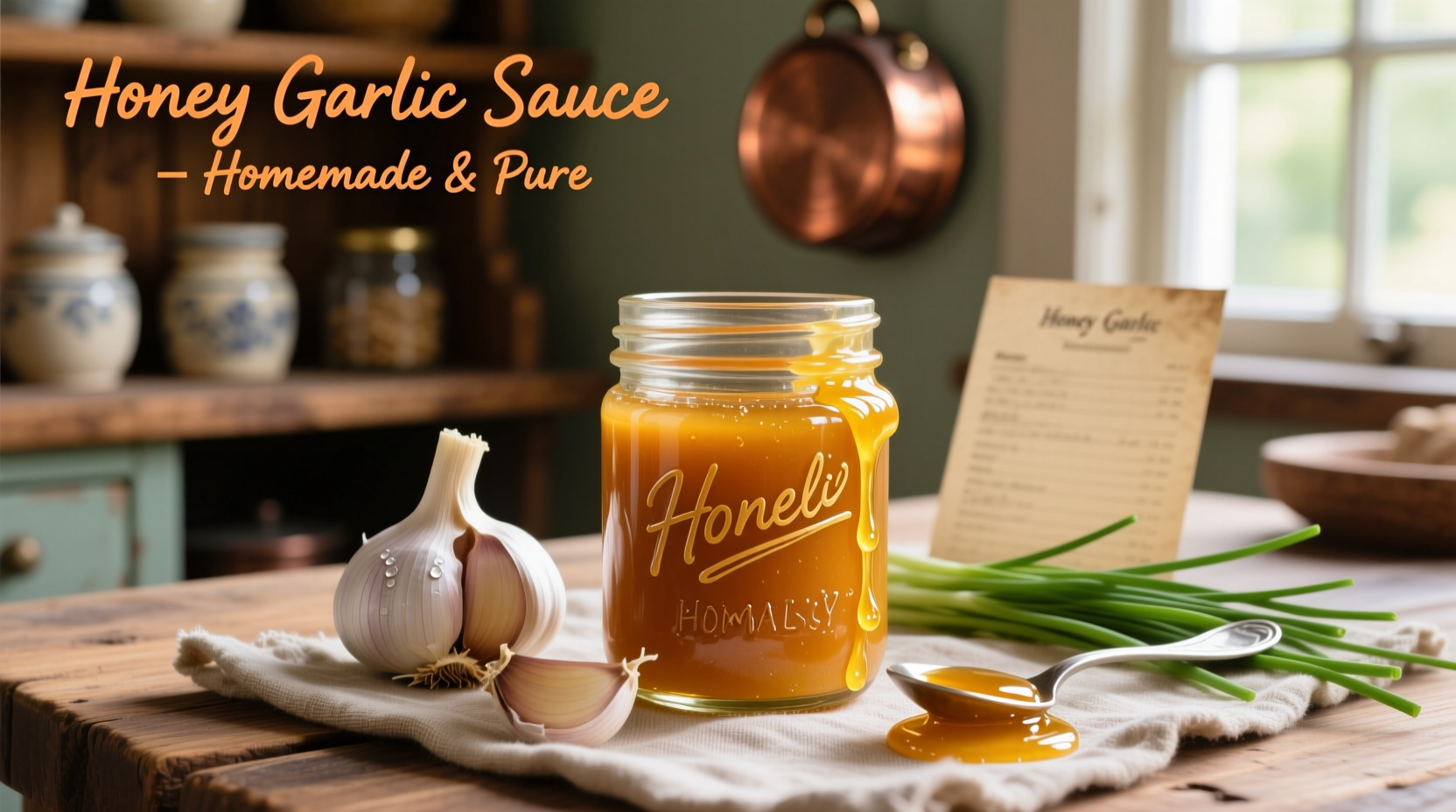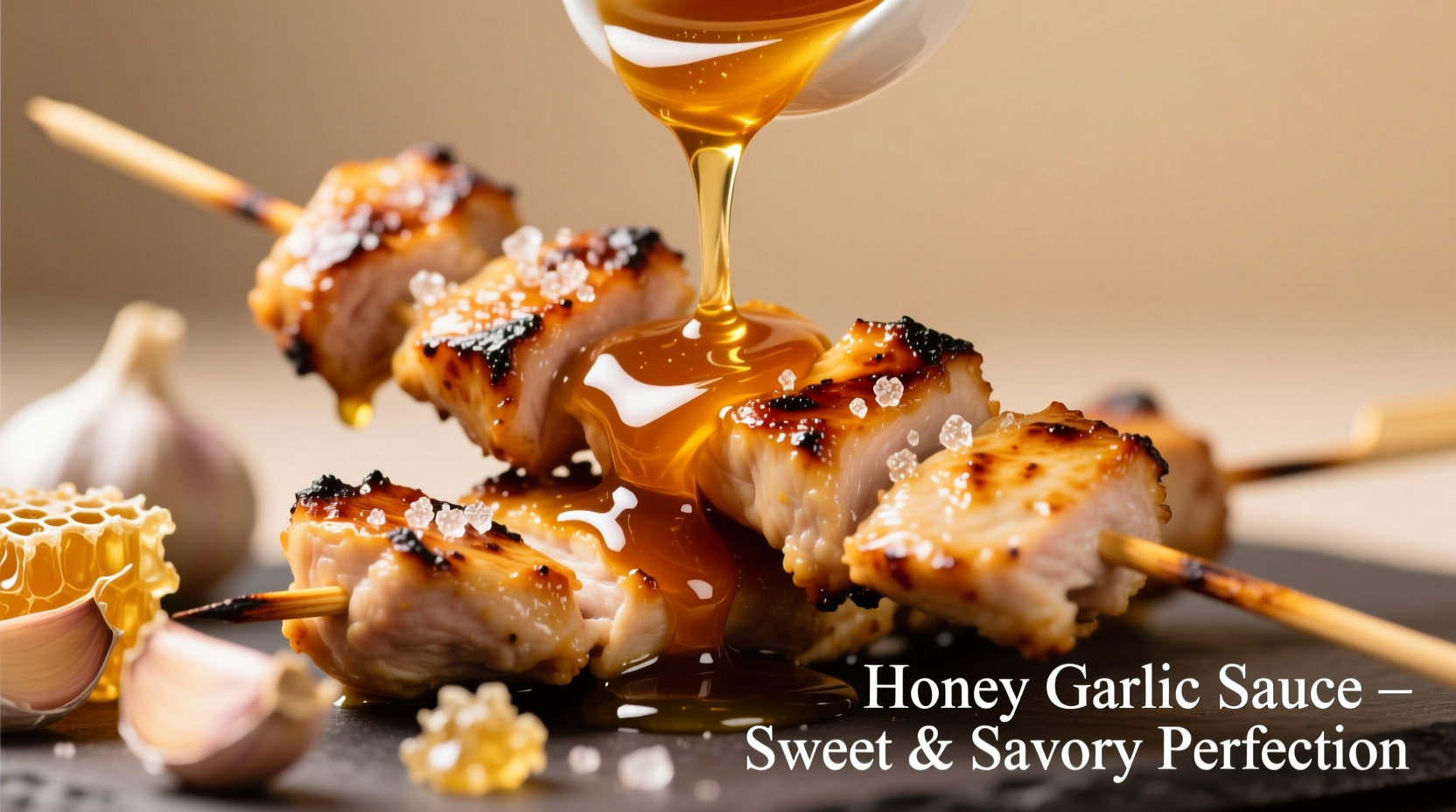Unlock the secret to restaurant-quality honey garlic sauce with this comprehensive guide. Whether you're preparing chicken wings, salmon fillets, or roasted vegetables, understanding the precise balance of sweet and savory elements transforms ordinary dishes into extraordinary meals. Professional chefs rely on specific techniques to achieve the perfect viscosity and flavor depth that home cooks often miss.
The Science Behind Perfect Honey Garlic Emulsion
Understanding the chemical interaction between honey's fructose content and garlic's allicin compounds explains why this pairing works so well. When heated properly, honey's natural sugars undergo controlled caramelization while garlic's sharpness mellows into complex umami notes. Food scientists at the University of California's Department of Food Science confirm that heating garlic in oil before adding honey prevents bitterness while maximizing flavor extraction (UC Davis Food Science, 2023).
| Ingredient Ratio | Texture Result | Best Application |
|---|---|---|
| 3:1 honey:garlic | Glossy glaze | Wings, ribs, stir-fries |
| 2:1 honey:garlic | Thick coating | Salmon, tofu, roasted vegetables |
| 4:1 honey:garlic | Light drizzle | Dipping sauce, salad dressing |
Evolution of Honey Garlic Flavor Profiles
Honey garlic sauce has transformed significantly since its emergence in North American Chinese restaurants during the 1970s. Originally a simple adaptation of Chinese sweet and sour sauces, it evolved through three distinct phases:
- 1970s-1980s: Basic preparation using honey, garlic powder, and bottled lemon juice
- 1990s-2000s: Incorporation of fresh garlic and rice vinegar for brighter acidity
- 2010s-Present: Artisanal variations featuring infused honeys and roasted garlic bases
This culinary timeline reflects broader food trends toward ingredient authenticity and technique refinement. The sauce's journey from cafeteria staple to gourmet favorite demonstrates how simple flavor combinations can achieve sophistication through proper execution.

Professional Technique for Maximum Flavor
Master chefs follow a precise sequence that home cooks often overlook. Start by gently cooking minced garlic in neutral oil until fragrant but not browned - this activates flavor compounds without bitterness. Add honey gradually while whisking constantly to prevent seizing. The critical step? Incorporating acid (rice vinegar or lime juice) after the honey has warmed, which preserves its delicate floral notes. Finish with a touch of cornstarch slurry only if needed for thickening, as excessive thickener creates an artificial texture.
Contextual Application Guide
Understanding when honey garlic sauce shines - and when it doesn't - separates novice from experienced cooks. This versatile condiment excels with:
- Poultry and pork dishes requiring caramelization
- Vegetables with natural sweetness (carrots, sweet potatoes)
- Asian-inspired stir-fries needing balanced sweetness
However, avoid using traditional honey garlic sauce with:
- Fish requiring delicate flavor profiles
- Dishes already containing significant sweetness
- Recipes needing extended simmering (causes burning)
Common Preparation Mistakes
Even experienced home cooks frequently make these critical errors:
- Adding honey to high heat - causes rapid caramelization and potential burning
- Using garlic powder instead of fresh - lacks aromatic complexity and creates flat flavor
- Over-thickening with cornstarch - creates unnatural, gloopy texture
- Adding acid too early - diminishes honey's floral notes through premature breakdown
Fix these issues by controlling heat levels, using fresh ingredients, and following the proper ingredient sequence. The USDA's Food Safety and Inspection Service recommends maintaining temperatures below 300°F (149°C) when cooking honey-based sauces to prevent harmful compound formation (USDA FSIS, 2022).
Variations for Dietary Needs
Adapt honey garlic sauce for various dietary requirements without sacrificing flavor:
- Vegan version: Substitute honey with maple syrup and add 1/4 teaspoon nutritional yeast for umami depth
- Low-sugar option: Use monk fruit sweetener with 1 tablespoon apple cider vinegar to maintain balance
- Gluten-free adaptation: Ensure soy sauce substitute is certified gluten-free tamari
Storage and Shelf Life Guidelines
Properly stored honey garlic sauce maintains quality for different durations depending on preparation method:
- Raw preparation (no cooking): 3-4 days refrigerated
- Cooked sauce: 2 weeks refrigerated in airtight container
- Pressure-canned sauce: 12-18 months pantry storage
The National Center for Home Food Preservation confirms that properly acidified honey garlic sauce (pH below 4.6) can be safely canned using standard procedures (NCHFP, 2021).











 浙公网安备
33010002000092号
浙公网安备
33010002000092号 浙B2-20120091-4
浙B2-20120091-4